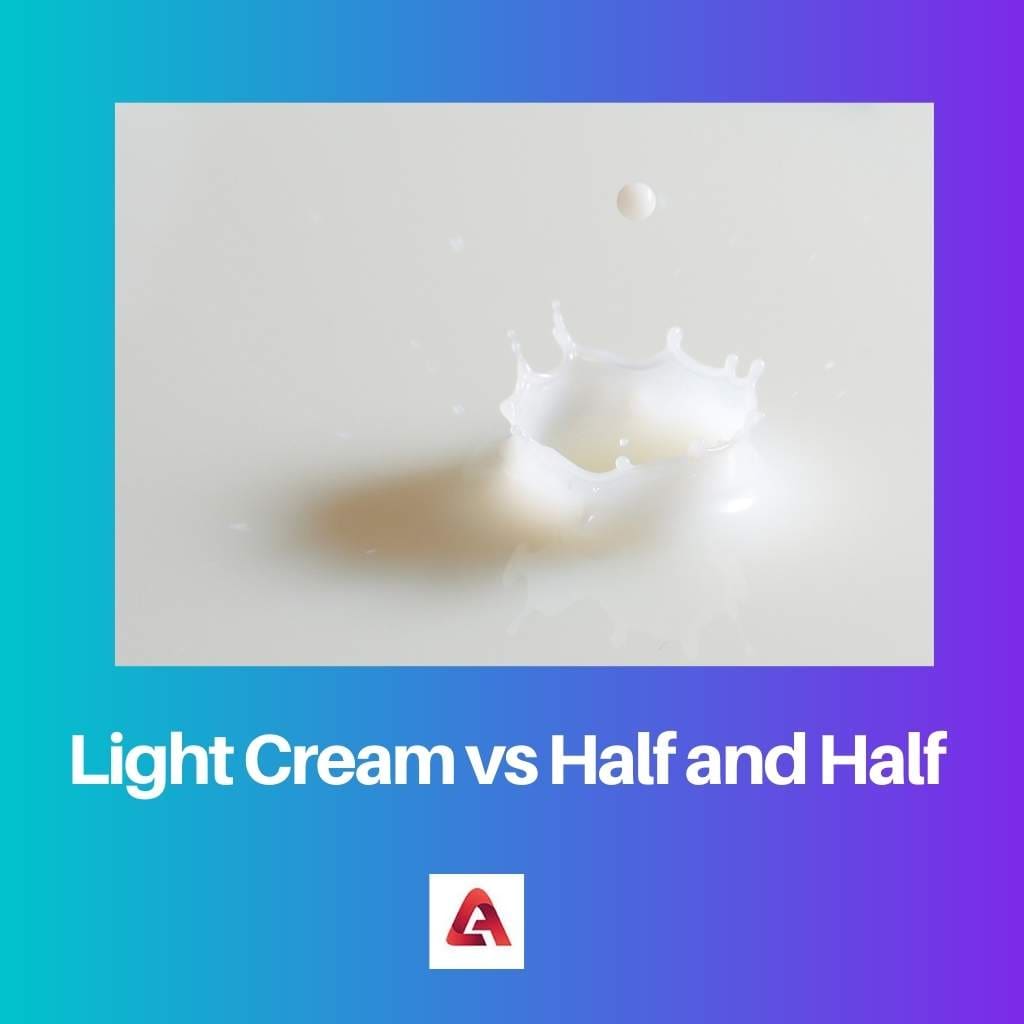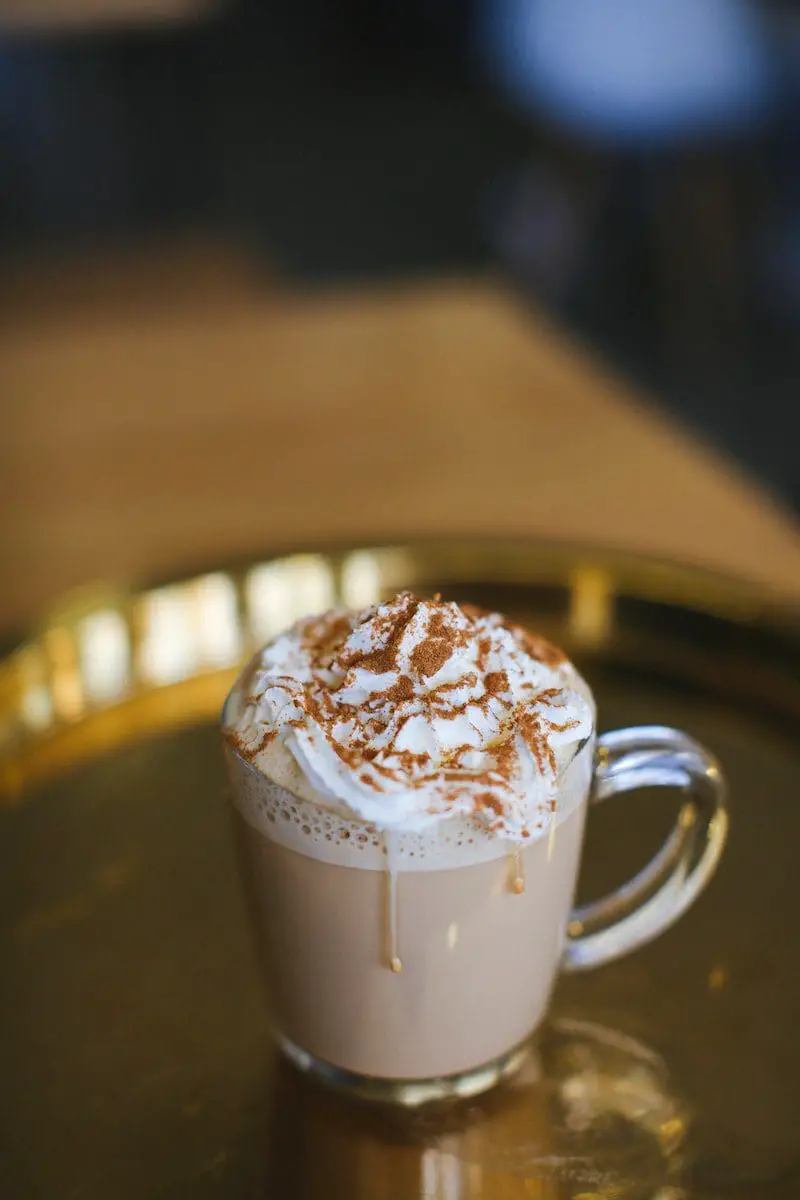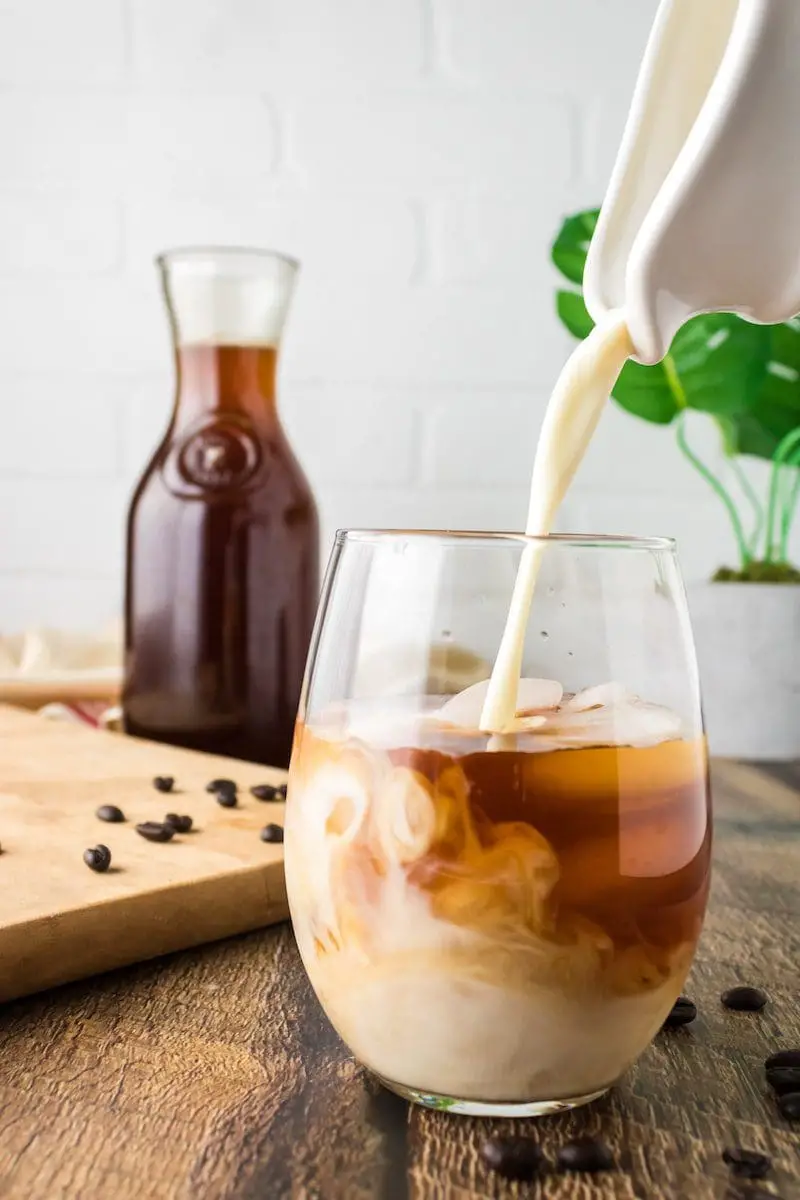Almost all of us tend to love the creams that cover our deserts, but for most people, all of these creams are very confusing as they tend to use the names of such creams interchangeably.
Light cream and a half and half are two types of whipping creams or topping creams that are widely used all across the world.
And if one is looking to enjoy these two to their maximum extent, he must be aware of the differences that lie between these two.
Key Takeaways
- Light cream contains 18-30% milk fat, while half-and-half has approximately 10-18% milk fat.
- Light cream is thicker and richer, whereas half-and-half is lighter in texture and flavor.
- Half-and-half is commonly used in coffee, while light cream is suitable for cooking and baking recipes that require a richer taste.
Light Cream vs Half and Half
Light cream, also known as coffee cream, has a fat content of around 20% to 30%. It is lighter than heavy cream but richer than milk. Light cream is commonly used as a coffee creamer. Half and half are a mixture of equal parts of milk and cream, with a fat content of around 10% to 12%. It is lighter than light cream and is used as a coffee creamer or as a substitute for heavy cream in recipes.

Also known by other names such as coffee cream all table cream, a light cream can basically be described as a format of milk-based creams that roughly contains almost 20% fact.
However, in certain cases, this fat might range up to 30%, and whenever this case occurs, there is a probability that this cream can be whipped.
However, a drawback is that even after whipping this cream, the texture might not be very thick and unstable, so it is not preferred by many people.
But on the other hand, half and half the type of cream can be easily explained by looking at the name only. It is described as the format of a cream that contains a half quantity of pure milk and half quantity of cream.
This ratio makes half and half come into existence with this particular name.
However, due to having very little fat content like 12%, this cream is never used for whipping purposes and is mostly used for mixing with beverages to thicken them.
Comparison Table
| Parameters of Comparison | Light Cream | Half and Half |
|---|---|---|
| Meaning | The term refers to a particular type of cream having a rich mixture of milk and cream. | The term refers to a particular type of cream having an equal mixture of milk and cream. |
| Fat content | the fat content of this cream ranges between 18% to 30%. | The fat content of this cream ranges up to 12% only. |
| Purposes | To thicken the beverage. | To provide an extra richness of cream is required. |
| Another name | The cream is known by multiple names such as single frame, coffee cream, and table cream, etc. | This cream is popularly known as half cream. |
| Substitute | A mixture of whole milk and evaporated milk can be used as a substitute | An equal mixture of pure milk with heavy cream can be used as a substitute. |
| Possibility of being whipped | In certain cases where the fat content of the screen ranges around 30%, it can be whipped into whipping cream. | This cream cannot be whipped as it has a very low-fat content, and it will never be stable. |
What is Light Cream?
Known by other names such as single cream, coffee cream, table cream, etc., light cream happens to be a form of cream that is majorly used and preferred all over the world in multiple desserts and beverages.
It is very popular all across the world, especially in countries like the United States and the United Kingdom.
Usually, it contains 20% milk fat, but in certain specific cases, this content might vary from 18% to 30%.
In cases where this extent happens to be 20%, this cream cannot be whipped as whipped cream, but in cases where the milk extent is slightly greater, this can be whipped into another dream.
But in either of the cases, the screen will not provide a stable consistency and will always be the one dripping over the deserts.
This cream is majorly used in those beverages or desserts where the extra richness of milk and cream is required, along with the need to thicken the beverage.
Apart from this utilization, this cream is also used as a topping cream over certain desserts in many cuisines. In any recipe, if light cream is not available, the substitute can be a mixture of whole milk with evaporated milk.

What is Half and Half?
In the context of creams, half and half refer to a particular type of cream that is made when equal quantities of pure milk and heavy cream are mixed altogether.
This happens to be considerably easy to comprehend and understand as it simply gets denoted by its name only.
This cream primarily contains 12% of milk fat, but in certain cases, this fat content might be increased.
But in any of the cases, this cream cannot be turned into a whipping cream as it will never provide the consistency required in whipping cream.
It is majorly used in decorating desserts and thickening certain beverages. But the term half and half not just represent a particular cream but other things as well.
This term can also be used for certain beverages and eating items that are made after mixing two components in equal amounts.
An equal mixture of pure milk with heavy cream can be used as a substitute for this cream, and this can easily be prepared at home.

Main Differences Between Light Cream and Half and Half
- Light cream happens to be cream with a rich mixture of milk and cream, while, on the other hand, enough is a particular cream having an equal mixture of milk and cream.
- Light cream contains around 30% of milk fat, while half and half contain 12% of this fat only.
- Another name for light cream is single and coffee cream, while another name for half and half is half cream.
- A mixture of the whole cream along with evaporated milk can be used as a substitute for light cream, while a mixture of heavy cream with pure milk can be used as a substitute for half and half.
- Light cream can be whipped in certain cases, while half and half cannot be whipped ever.




